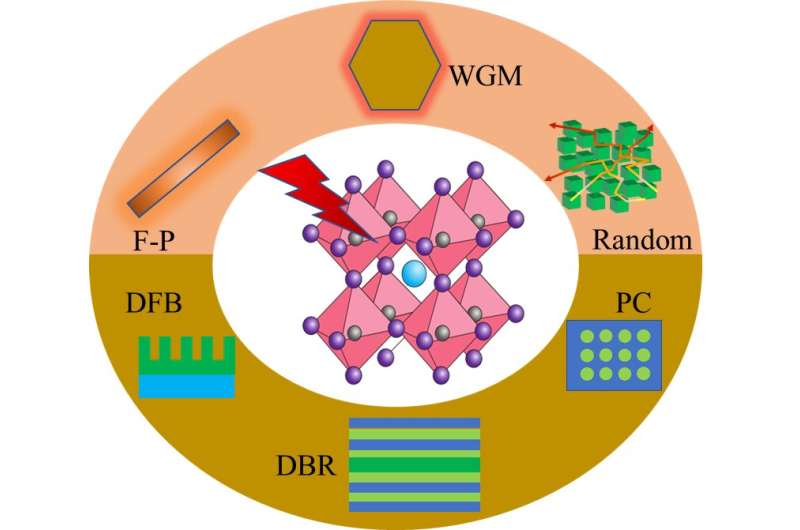Different cavity types of perovskites for miniaturized lasers. Credit: SIOM
The demands of miniaturization and integration of photonic components, such as nanolasers, have opened up and pushed the development of integrated optical systems. Halide perovskite semiconductor materials have shown tremendous potential in nanophotonics, particularly in miniaturized lasers, due to their outstanding properties.
Recently, a research team from Shanghai Institute of Optics and Fine Mechanics (SIOM) of the Chinese Academy of Sciences (CAS) was invited to review the advances in metal halide perovskites for miniaturized lasers. This work was published in Nanophotonics.
Perovskite laser research has advanced rapidly and it mainly focuses on the inherently active microcavities and externally passive microcavities of halide perovskites. In this article, they firstly reviewed the fundamental properties in terms of crystal structure and optical characteristics of perovskites, such as bandgap engineering, optical gain, and exciton binding energy, etc.
Then the perovskite lasers were classified into two sections based on the morphology features: the ability/inability to support lasing behaviors by themselves. Every section was further divided into two kinds of cavities according to the light reflection paths (Standing wave for the Fabry–Pérot cavity and traveling wave for the Whispering-Gallery-Mode cavity).
Furthermore, the random lasing without the cavities were also summarized. Among them, the perovskite lasing performance involving fabrication methods, cavity sizes, thresholds, quality factors, pumping sources, etc. was presented in detail.
Finally, considering the future development and application for perovskite lasers, some challenges and prospects were given.
This review provides an overview of the recent developments and current activities for perovskite lasers.
More information: Zhengzheng Liu et al. Advances in inorganic and hybrid perovskites for miniaturized lasers, Nanophotonics (2020). DOI: 10.1515/nanoph-2019-0572
Provided by Chinese Academy of Sciences
























